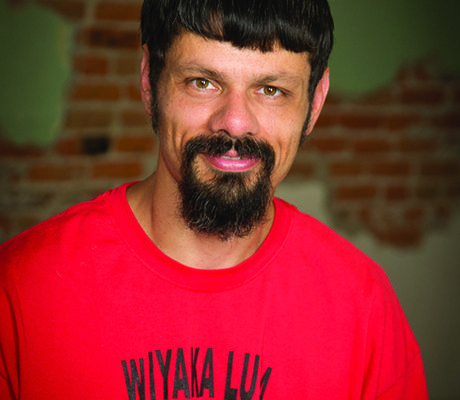A bag and a box. It has been a busy recycling week if my family fills the white drawstring sack hanging from the wall and the medium-size cardboard container on the floor of the laundry room. Sorted (usually) every Saturday morning, the collection fits easily into the back of our Buick and weighs about five pounds, maybe ten at the most if there is an excess of paper or glass that week.
Any dedicated recycler knows about how much material leaves their home bound for Keep Alliance Beautiful. Ever wonder about the totals for our community overall? At the recycling center we record the quantity of everything shipped out of our doors by the pound. The KAB office staff calculates the totals quarterly. Through the first three quarters of 2020 the center has handled 612,800 pounds of recyclables. Box Butte County and the surrounding area served by KAB is on pace to recycle 817,067 pounds if the quarterly average of 204,267 pounds holds for a little over two months. If met or exceeded, I would consider that quite a testament of commitment to a healthy environment by our friends and neighbors.
First, I should back up my assessment. My opinion comes after reviewing KAB’s numbers from 2017 through the third quarter of 2020. The projected total of more than 408 tons for 2020 would be the highest since two years ago. The tallies for the past three years, in pounds: 2017 — 562,050, 2018 — 745,271 and 2019 — 665,300. Rather than appearing like the profile of hills on a line graph, I’m confident that the total number of pounds can keep climbing in the next four years to exceed a million pounds.
Improvement should always be a goal. To hit 500 tons in a year a few factors may come into play. There are people who faithfully recycle certain items, such as plastic bottles or corrugated cardboard, yet do not bring office paper or glass to the KAB trailers, for example. Regular recyclers should consider if there is anything else they can save from the landfill. The greatest potential comes from the portion of the local population that does not recycle at all. I hope more than a few households will look at the practice from an economic and environmental point of view and start small. Other increases may come from residents who lack recycling services in nearby communities and now utilize KAB. We have also seen growth as new materials are added, such as plastics in the Hefty Energy Bag category.
Materials tracked in the KAB recycling volumes fall into 15 types as well as a column for “other.” Cardboard, milk jugs, office paper, aluminum cans and paperboard were the only things, as of Sept. 30 this year, that earned money to help pay for operating the recycling center. Grants and other funding sources, including the city of Alliance, make up the difference. Cardboard is also handled most by KAB with 265,609 pounds baled in the first three quarters of 2020. At the end of September that paid $42 a ton.
Considering what KAB receives, totals have varied since 2017. However, I notice a few highlights. The amount of aluminum cans is set to more than double compared to 2019. By the third quarter KAB had baled 9,580 pounds. Paperboard has gone up every year since 2017 (39,837 pounds 3Q). Glass recycling is up significantly at 91,589 pounds according to the latest numbers this year, more than twice the total of any of the previous three years. Newspapers, in contrast, are down coming in at 28,160 pounds so far for 2020 versus 53,720 in 2019. After moving from accepting Nos. 1 and 2 plastics in the second quarter of 2019 to Nos. 1-7 the amount has increased overall and is on pace to hit 41,600 pounds this year. Hefty Bag items were taken starting in the third quarter of 2019. These formerly unrecyclable materials (at least by KAB), including plastic shopping bags and styrofoam cups, have grown every quarter with nearly a ton (1,902 pounds) processed in the most recent tally.
Every pound recycled is a pound not bound for a landfill. In 2021 let’s let every 16 ounces that avoids the garbage truck be one in a million for KAB.

